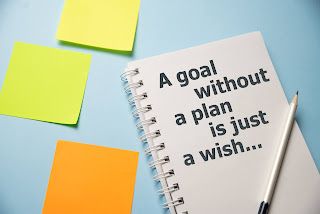Steps 6 - 10 of my 10 Steps to Get Out of Debt
6) Breathe, I promise, you can do this.
7) Starter Emergency Savings - before you start paying off debt, it is essential to save up or set
aside an emergency fund. Dave Ramsey suggests that you save
$1,000, if you already have more than $1,000 in savings, use any
savings above the $1,000 to pay down debt. This will provide a
buffer should you have a real emergency while trying to get out of
debt. If you don't have a
8) Create monthly budgets - One of the essential tools for getting out of debt is figuring how much money you can throw at it each month, determining the size of your shovel. Part of this process is getting rid of everything you have in your budget that is unnecessary. Look at EVERY line item and ask yourself, "Is this a necessity?" **Stay tuned, I will have a blog post soon that will explain this in detail.**
9) Debt Snowball - Now that you have listed your debts in order, from the smallest to the largest, focus on paying the lowest balance owed first.
Make the minimum payments on all your other debts while you attack the smallest debt. After you pay the first debt in full, apply the money you were putting toward that debt toward the next debt in line and repeat until all of your debt is 100% paid off.
The only exception to this is that you can carve out your mortgage from your list of debts. Continue to make your regular mortgage payment and worry about paying that off down the road.
********************EXAMPLE********************
For this example, let's assume you have $1,000 to apply toward debt each month.
List of debts:
- $ 250 Medical Bill - Minimum payment $250
- $ 1,200 Credit Card (1) - Minimum payment $48
- $ 2,300 Student Loan (1) - Minimum payment $29
- $ 5,100 Credit Card (2) - Minimum payment $204
- $ 7,000 Student Loan (2) - Minimum payment $87
- $ 8,650 Car Loan - Minimum payment $382
In this example, the medical bill was paid in full in the first month. In month two, apply the $250 you paid toward the medical bill in month one, and add it to the minimum payment you made toward the next debt in your list of debts. In this example, the next debt is Credit Card 1, and the minimum payment is $48. So, in month two, you will send a total of $298 toward Credit Card 1, the $250 that was sent to the medical bill in month one + $48 minimum payment = $298.
Once Credit Card 1 is paid in full, move to the next debt in your list of debts. In this example, you would apply the $298 you were sending to the credit card company plus the $29 minimum payment due to Student Loan 1 each month, sending a total of $327 each month until it is paid in full, and so on.
***********************************************
Remember, once you pay off the balance of a credit card, call and close the account. **WARNING: When you call to close the account, the credit card company will try and convince you to stay and keep your account open. They are going to throw the kitchen sink at you, so be prepared and stand firm. Stay strong! You are now on a new path, don't unravel the hard work and sacrifices you have made to this point to go back into debt.** Ask them to send you a letter or email that your account balance is zero and confirmation that the account is closed. Ask them to note the account of the conversation. Write down important details of your discussion, such as who you spoke with, date, time, confirmation/case number if it applies, and key facts of what you discussed. These notes will come in handy if you need to follow up on the letter/email confirming that your account balance is zero and was closed.
10) Sell anything and everything - Look around your house to determine if there is anything you have that you can sell to speed up the process. Every dollar really will make a difference, so have a garage sale or sell a car and buy a much cheaper vehicle. Remember, while this may be a grueling process, things are replaceable.
Remember to breathe, I know it feels like you have a mountain to climb, but it is possible. People do it every day, and one day, in the not too far future, you will share your story with others so they can begin their debt-free journey and enjoy the freedom of living debt-free.
Next time, we will dive deeper into monthly budgets, where I will show you how to determine what is necessary and what is not.



Comments
Post a Comment